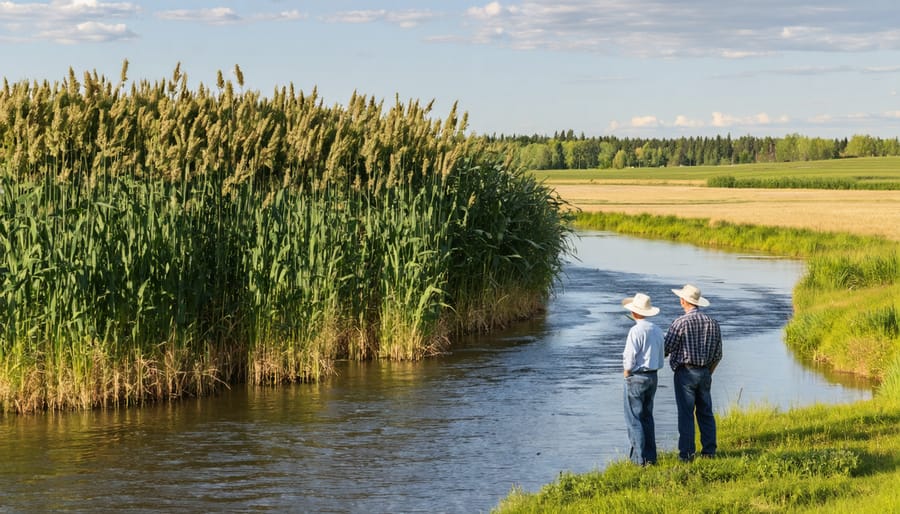Biodiversity is the backbone of life on Earth, the intricate web that connects all living things. From the tiniest microbes in the soil to majestic trees stretching skyward, each species plays a critical role in maintaining the delicate balance of our planet’s ecosystems.
But biodiversity isn’t just an abstract concept – it has real, tangible benefits that impact our daily lives. In this article, we’ll explore three key ways that biodiversity supports human well-being, agriculture, and the resilience of our natural world.
By understanding and appreciating the value of biodiversity, we can work together to protect and nurture the incredible variety of life that sustains us all. So let’s dive in and discover why biodiversity matters – for ourselves, for future generations, and for the health of our shared home.
Benefit 1: Biodiversity Boosts Natural Pest Control
The Power of Beneficial Insects
In a biodiverse ecosystem, predatory insects play a crucial role in keeping pest populations under control. When a variety of plant species are present, they attract and support a diverse array of insects, including beneficial predators like ladybugs, lacewings, and parasitic wasps. These tiny allies feast on common agricultural pests such as aphids, mites, and caterpillars, reducing their numbers without the need for chemical interventions. By employing natural pest control methods and fostering biodiversity, farmers can harness the power of these helpful insects to maintain a healthy balance in their fields. This not only minimizes crop damage but also promotes a more resilient and self-regulating ecosystem. So, the next time you spot a ladybug or a praying mantis in your garden, remember that they’re not just fascinating creatures – they’re also hard at work protecting your plants and contributing to the overall health of your farm.

Case Study: An Alberta Farm’s Success Story
Nestled in the heart of Alberta’s countryside, Green Acres Organic Farm stands as a shining example of biodiversity’s power. This family-run operation has embraced nature’s diversity to combat pests and cultivate a thriving, resilient ecosystem. By planting a variety of crops, including legumes, brassicas, and herbs, Green Acres creates a mosaic of habitats that attract beneficial insects like ladybugs and lacewings. These natural predators keep pest populations in check, reducing the need for chemical interventions.
The farm also integrates livestock, such as chickens and sheep, into their system. As these animals graze and fertilize the land, they contribute to soil health and help control weeds. Cover crops are another key strategy, with the farm sowing a diverse mix of species to protect and enrich the soil between main crop rotations.
Since adopting these biodiversity-focused practices, Green Acres has seen a significant decrease in pest pressure and an increase in yields. Their success story showcases how working with nature, rather than against it, can lead to a more sustainable and profitable future for Alberta’s organic farms. As owner Sarah Johnson puts it, “Embracing biodiversity has been a game-changer for us. It’s not just about growing healthy food; it’s about nurturing a healthy ecosystem that supports us all.”
Benefit 2: Biodiversity Enhances Soil Health and Fertility

The Underground Web of Life
Beneath the surface of your farm lies a complex network of soil microbes, fungi, and other organisms that play a vital role in maintaining soil health. These tiny beings are the unsung heroes of agriculture, working tirelessly to break down organic matter, cycle nutrients, and support plant growth. Soil microbes help to create a living, breathing ecosystem that is essential for healthy crops and sustainable farming practices. Fungi, in particular, form symbiotic relationships with plant roots, extending their reach and helping them access water and nutrients. This underground web of life also helps to improve soil structure, increase water retention, and suppress plant diseases. By nurturing and protecting these invaluable organisms through practices like cover cropping, crop rotation, and reduced tillage, Alberta farmers can harness the power of biodiversity to build resilient, productive soils that will support their farms for generations to come. As Dr. Sarah Johnson, a soil ecologist at the University of Alberta, explains, “When we focus on cultivating a diverse and thriving soil microbial community, we’re investing in the long-term health and sustainability of our agricultural systems.”
Biodiversity-Friendly Practices for Soil Health
To promote soil biodiversity, consider adopting cover cropping, which involves planting a diverse mix of crops between your main cash crops. This practice helps protect and enrich the soil, reduces erosion, and supports a variety of beneficial microorganisms. Leguminous cover crops, such as clover or alfalfa, can also fix nitrogen in the soil, reducing the need for synthetic fertilizers.
Another effective strategy is reduced tillage or no-till farming. By minimizing soil disturbance, you allow the complex network of soil organisms to thrive, improving soil structure, water retention, and nutrient cycling. If you do need to till, consider using less invasive methods like strip-tillage or shallow cultivation. For those interested, no-till organic farming offers a sustainable approach to boosting soil health.
Incorporating organic matter, such as compost or well-aged manure, into your soil can also boost biodiversity. These additions provide food and habitat for beneficial organisms, while improving soil structure and fertility. Remember to source these materials responsibly to avoid introducing contaminants or pathogens.
Lastly, embrace diversity in your crop rotations. By alternating between different plant families, you can disrupt pest and disease cycles, reduce soil-borne pathogens, and support a wider range of soil organisms. This practice also helps maintain soil fertility and can improve overall crop resilience.

Benefit 3: Biodiversity Increases Resilience to Climate Change
Nature’s Shock Absorbers
Biodiversity acts as a buffer against the impacts of climate change, helping to absorb shocks and maintain ecosystem stability. Just as a well-diversified investment portfolio can weather market fluctuations, a diverse array of plant and animal species provides resilience in the face of environmental stresses. For instance, if a severe drought or pest outbreak affects one crop, having a variety of other crops and native plant species can help maintain overall productivity and soil health.
Alberta farmer Sarah Thompson has seen this firsthand on her mixed crop and livestock operation near Edmonton. “By integrating cover crops, rotational grazing, and preserving natural areas, we’ve been able to buffer against extreme weather events,” she explains. “Even during the dry years, our soil retains moisture, and the diverse vegetation supports beneficial insects that keep pests in check.”
Research backs up these observations. A study by the University of Alberta found that farms with higher levels of biodiversity had more stable yields and were less vulnerable to climate variability compared to monoculture operations. As climate change intensifies, embracing biodiversity is becoming an increasingly important strategy for farmers to adapt and build resilience in their agroecosystems. For more insights on climate-smart farming, see how Alberta’s farmers are innovating.
Expert Insight: Future-Proofing Farms with Biodiversity
Dr. Amrita Patel, a leading agricultural scientist from the University of Alberta, emphasizes the importance of biodiversity in ensuring the long-term viability of farms. “By nurturing a diverse range of plant and animal species, farmers are not just protecting the environment but also safeguarding their own futures,” says Dr. Patel. “A biodiverse farm is more resilient to climate change, pests, and market fluctuations. It’s like having a diversified investment portfolio for your land.”
Dr. Patel’s research focuses on the development of sustainable agricultural practices that promote biodiversity while maintaining productivity. She has worked closely with farmers across Alberta to implement these strategies and has seen firsthand the positive impact they can have. “Farmers who embrace biodiversity are not only contributing to the health of our planet but also ensuring that their farms will continue to thrive for generations to come,” she notes. “It’s a win-win situation.”
By adopting practices such as crop rotation, intercropping, and the creation of wildlife habitats, farmers can foster biodiversity on their land. These measures not only support the ecosystem but also provide long-term economic benefits by reducing the need for expensive inputs like pesticides and fertilizers. As Dr. Patel puts it, “Investing in biodiversity is investing in the future of your farm.”
Conclusion
In conclusion, embracing biodiversity on your organic farm offers a multitude of advantages. From enhanced ecosystem resilience and improved soil health to natural pest control, the benefits are clear. By fostering a diverse array of plant and animal species, you can create a more sustainable and productive agricultural system that benefits both your farm and the environment. As an organic farmer in Alberta, you have the power to make a positive impact by prioritizing biodiversity in your practices. Start small by incorporating cover crops, creating wildlife habitats, or exploring companion planting. Every step towards biodiversity is a step towards a healthier, more vibrant farm and a brighter future for Canadian agriculture. Embrace the power of diversity and watch your farm thrive.











